Just like humans, dogs are susceptible to skin problems. You dog can get skin allergies or a skin rash at random times for no particular reason. Additionally, dogs may suffer from serious skin conditions because they have thick fur coats, skin issues, such as a red rash on the dog's belly, can be difficult to diagnose. If you find some red rushes on your dog, don't just panic. Here are some of the main reasons which will definitely help you out.

Red Rash on Dog's Belly
Allergy
Symptom: Similar to humans, dogs can develop allergies. Dog allergies often show up on the skin and symptoms may include itchy skin, scratching or biting at the skin, redness like red rash on dog's belly, chin, or paws, or skin with raised bumps or pustules. Dogs may also lick or chew affected areas or roll on the ground.
Treatment: Allergies in dogs are usually very treatable, and dogs with allergies generally have a good prognosis. Treatment options may include removing the source of the allergen, applying topical medications such as shampoos or creams, oral medications, or changing dogs' food if food allergy is suspected.
Heat Rash
Symptom: Heat rash in dogs usually appears on dogs' stomach (red rash on dog's belly), in the folds' of skin, under neck or tail, or near dogs' ears. Heat rash may be minor at first but can soon become an oozing red rash with pimples, boils, scabs, and/or an odor. Dogs may lick, chew, or bite at the site.
Treatment: Home treatment for heat rash in dogs can include cooling the dog off and applying calamine lotion or a mild hydrocortisone cream. However, hydrocortisone cream should never be used for more than three days unless your veterinarian tells you so. You should seek the advice of your vet for heat rash in dogs, as well.
Dermatitis
Symptom: Dermatitis is another word for inflammation of the skin. In dogs, dermatitis usually shows up as an intense itchiness, and the dog may be itchy at all times. Symptoms may include skin redness, thickening, bumps, oily skin, loss of fur, dandruff, or foul odor.
Treatment: Dermatitis can get worse over time, so it is important that you seek treatment for your dog. Treatment options may include oral, topical, or injectable corticosteroids or antihistamine medications. You should also examine your environment and remove anything that could be causing your dog's dermatitis, such as fleas.
Yeast Infection
Symptom: Dogs with a yeast infection typically have exposed patches of skin where the fur has fallen out, which may appear greasy or have an odor. These patches may also have rashes, sores, or lesions, which means symptoms like red rash on dog's belly can happen with yeast infection.
Treatment: Treatment for yeast infection doesn't work overnight, so you'll need to be patient and even seek advice from a vet.
Imbalanced diet, like eating too much carbohydrates, can result in excess yeast production, so proper diet is important in treating and preventing yeast infection.
To soothe its feet and paws, you can mix apple cider vinegar and water with a 1:1 ratio, soak your dog's feet and paws in it several time per day and wipe them dry afterwards. But do avoid this procedure if there are lesions.
You can alleviate your dog's suffering with a medicated anti-fungal shampoo at least twice per week. After each bath, give your dog a massage with herbal oils like eucalyptus to heal and soothe its skin.
Ringworm
Ringworm is a type of fungal infection commonly found in dogs. Although rash is not a typically symptom of ringworm, reddened skin is, so your vet may consider a diagnosis of ringworm if your dog has a red rash on his belly or other parts of his body. Other symptoms may include itchiness, boils or lesions. Treatment will include anti-fungal medications and wearing Elizabethan collar to prevent your dog from accidentally consuming medicines applied on skin.
Folliculitis
Folliculitis is an infection of the hair follicles. Although it is not usually a red rash on dog's belly, it may resemble one in some dogs. The skin may appear red or you may feel red bumps under your dog's skin. You should first eliminate parasites likes fleas on your dog with spot-on medication, give your dog medicated shampoo twice per day and feed your dog oral antibiotics and/or apply antibiotic creams for up to 8 weeks.
Mange in Dogs
Mange is a condition caused by mites, and it may resemble a rash due to reddened or scabbed skin where the dog has been scratching. Treatment will focus on killing the mites and treating the affected skin.
Hot Spots
Hot spots, also called moist dermatitis, can make the skin irritated, inflamed and infected. It can result in itchy, moist reddened areas in the skin, which can be mistaken for a red rash in dogs. This is very painful condition and can lead to hair loss. Licking and chewing can only make things worse. Hot spots can be treated with medications including antibiotics, antihistamines, or corticosteroids.
Ticks
Ticks can cause itchy, sore, or red skin in dogs, which may resemble a rash on dog's belly or other body parts. After feeding, ticks become bloated and you may even spot them with bare eyes. With tick bites, you dog may get fevers, have no appetite, pain and even become depressed. You should consult your vet to remove the ticks and ask for preventative medication for ticks.
Fleas
Similar to ticks, flea bites in dogs can cause red and itchy skin that may look like a rash. Treatment includes thoroughly cleaning the dog and your home, and using topical or oral medications to eliminate the current situation. Your dog should also receive preventative medication to stop fleas from coming back.

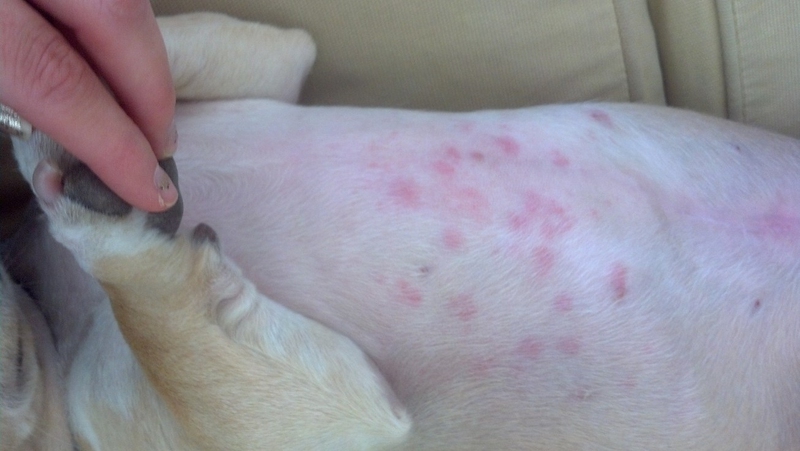
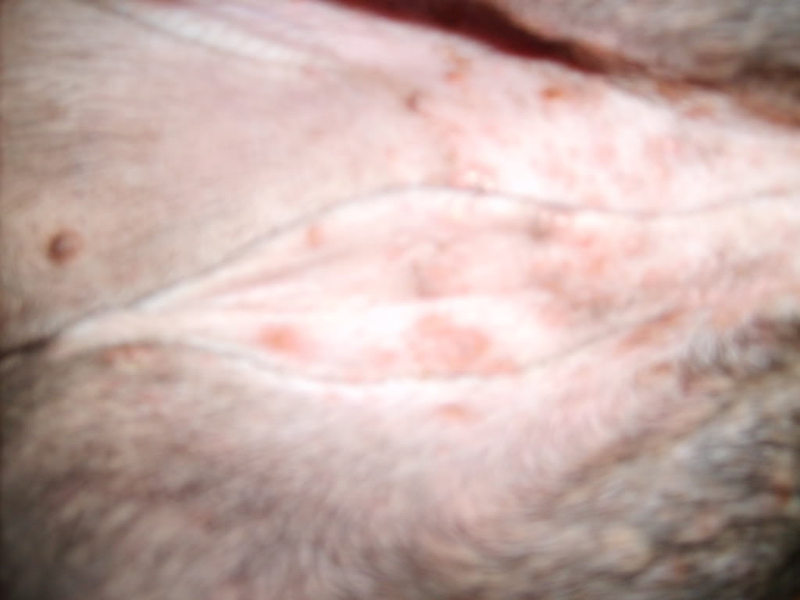
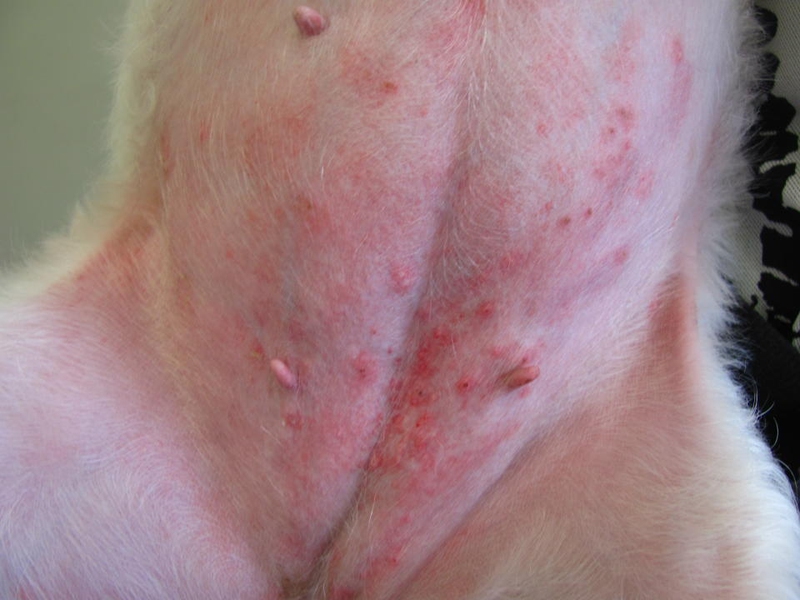

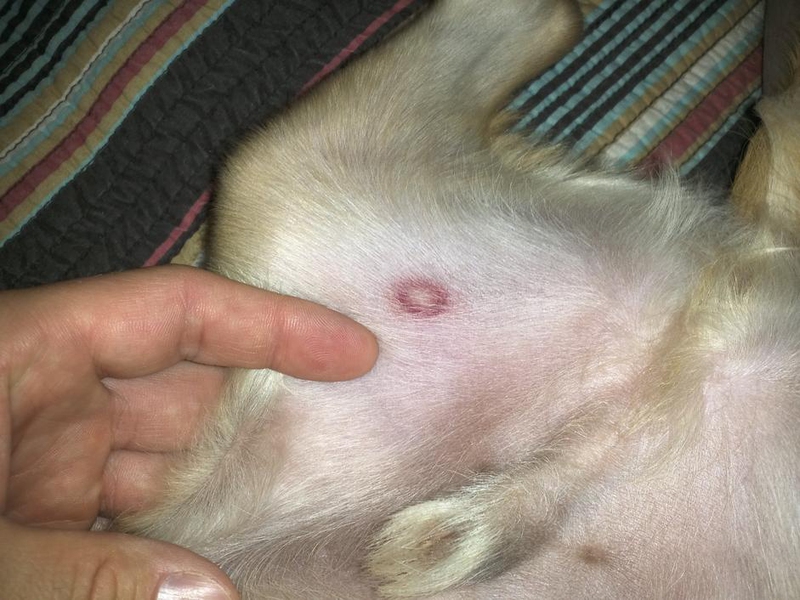

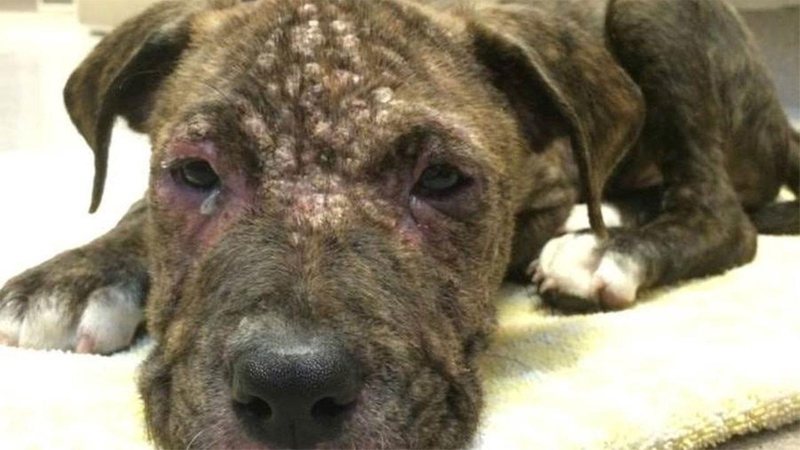

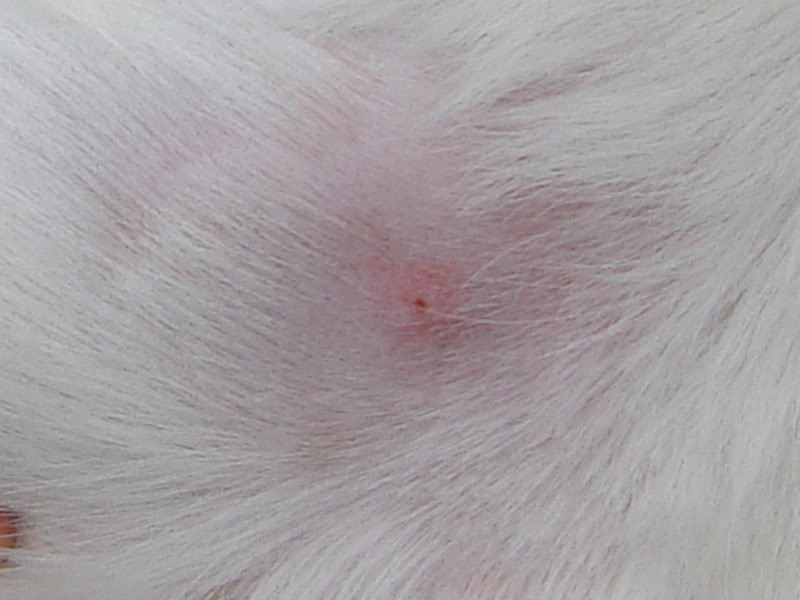
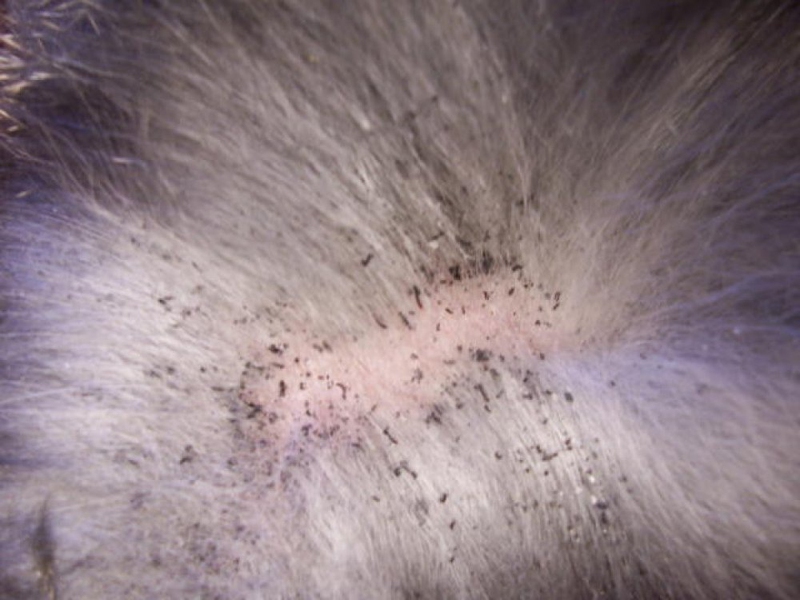
View All Comments /Add Comment